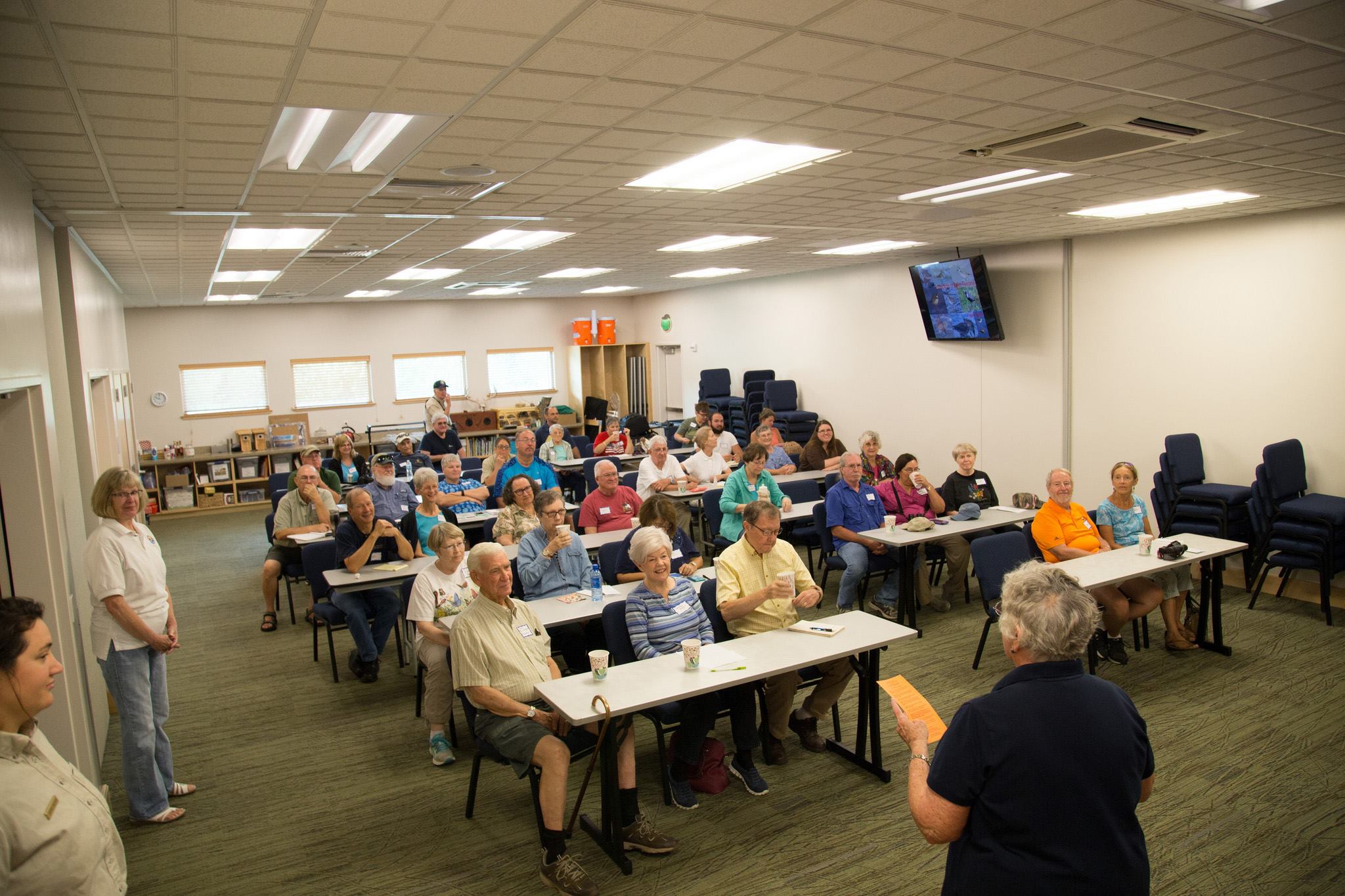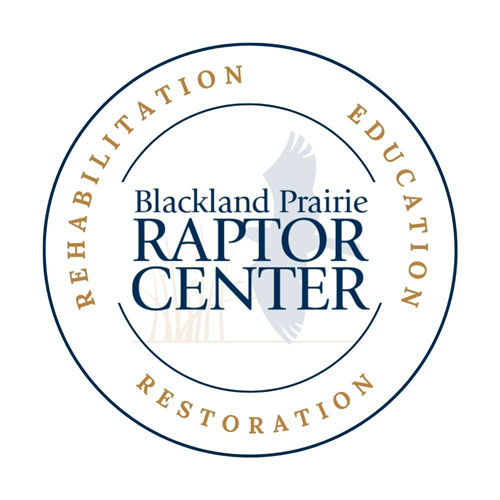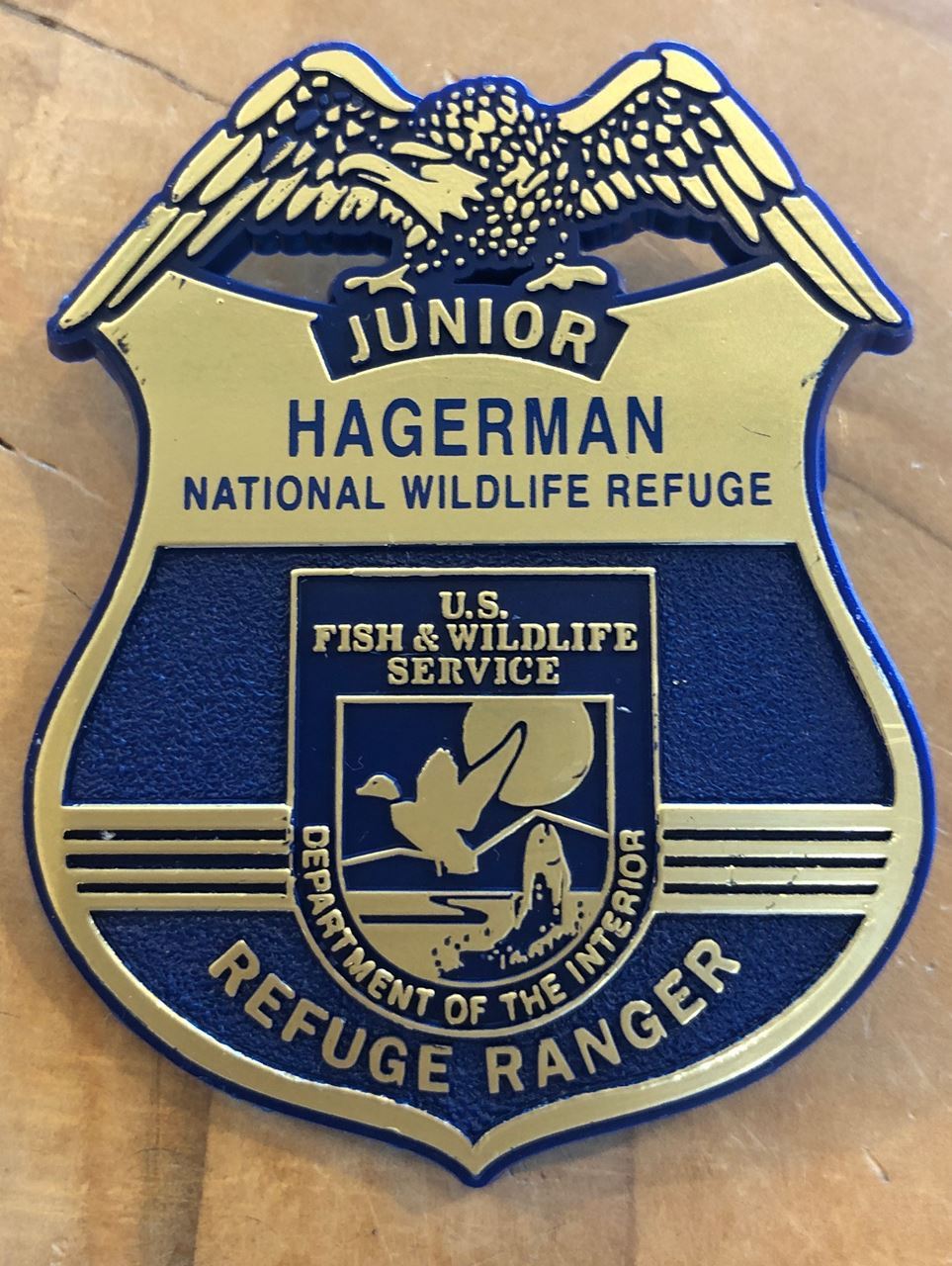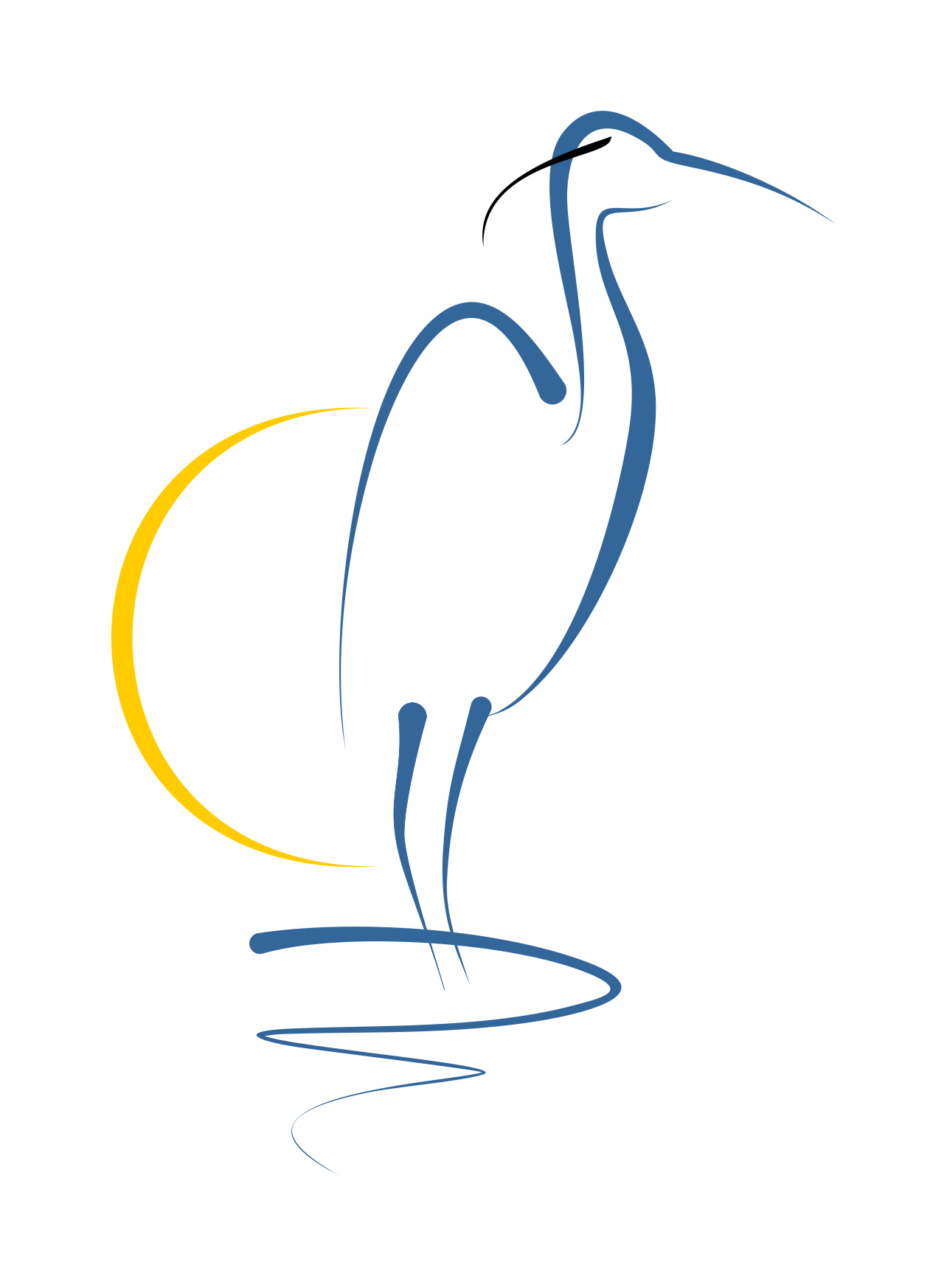Rewilding Sticker Hill-The Fall Bloomers Are Here!
Article and Photos By Karen Glenn, Blackland Prairie Master Naturalist
Marsh fleabane, Pluchea odorata, on the left has blooms that range from almost white to striking deep purple. The late boneset, Eupatorium serotinum, on the right, has bright white flowers. These two clumps are growing in the partial shade of a large boxelder tree, Acer negundo, a member of the maple family (Sapindaceae). These plants are 3-4 years old and are around 4-5 feet tall. |
Early Fall has become one of my favorite times of the year. The Fall bloomers are beginning to take over the landscape. As I mentioned in a previous article, the three most common plant families providing food for birds and pollinators in north Texas are the Asteraceae (composite, or sunflower family), the Fabaceae (legumes, or bean family), and the Rosaceae (rose, which contains most of our fruit trees, vines, and shrubs). This is the time of year for the sunflower family to shine. There are so many fantastic fall bloomers in this huge family of flowering plants. The two composite plants that get the most Fall visitors on Sticker Hill are late boneset (Eupatorium serotinum) and marsh fleabane (Pluchea odorata). Out of the two it is difficult to say which gets the most activity. Late boneset seems to get more butterflies, while the marsh fleabane attracts a bigger variety of different pollinator types. They will produce blooms until frost, providing pollinators with important, late-season resources to help get them through winter.
Top: A Southern Plains bumble bee (Bombus fraternus) foraging on late boneset (Eupoatorium serotinum). Bottom: An unidentified skipper butterfly sipping nectar from late boneset (Eupatorium serotinum) Late boneset was the plant that really caught my attention when I began rewilding this property. The butterflies, and other pollinators, went crazy over this plant. It is usually covered in tiger swallowtails, which have not been common to see this season, so far. I am not sure why, but hopefully they will return next year. There has been a lot of development in our area, which has drastically cut back on our wild places where useful “weeds” are allowed to grow, so I rarely remove boneset, even if it comes up in a place that I wouldn’t normally want it to. It |
seems to be a plant many pollinators use for late season nectar, plus it is a beautiful plant, even before the blooms come in.
Late boneset is native across the eastern half of the United States and will grow in just about any soil and under most conditions. It is a perennial, so it will come back year after year, becoming larger with prolific blooming. It has handled the lack of rain this year like a champ. After blooming it produces seeds for birds to feed on all winter. As a bonus it is deer resistant. Even my goat leaves it alone! If you are having trouble with critters eating your flowering plants this may be an excellent choice to try. According to several sources this plant also attracts beneficial predatory insects that help control other insect pests. It may be propagated by seed and readily self-seeds if left alone.
An American bumblebee (Bombus pensylvanicus) on marsh fleabane (Pluchea odorata) |
A closeup of Western ironweed, Vernonia baldwinii, growing in full sun and moist soil on the edge of a pond. |
When I first discovered marsh fleabane on my property, I thought it was a similar plant, Western Ironweed (Vernonia baldwinii), which is another excellent plant for a pollinator garden that blooms early April to October. Fleabane did not pass the smell test. As its Latin name suggests, marsh fleabane (P. odorata) releases an interesting fragrance. Some people call the plant sweetscent, although I do not find it very sweet smelling. Think flowery camphor. The scent is still somewhat pleasant, and it seems to draw in the pollinators. Mine is usually covered in bumble bees. It has a different growth habit depending on its location and resources, but it prefers habitats that are moist, hence the marsh in its name. I have found it grows quite well in most locations, although the colors are not as vibrant when grown in harder packed, drier soils and/or partial shade. It will grow in all light conditions: shade to full sun. It is pickier about having wet feet than bright light.
Marsh fleabane is native perennial in Texas, although some sources will call it an annual in northern regions. It is a close relative of camphorweed, which explains the hint of camphor in its scent. It begins blooming from early summer through frost, so it is an excellent addition for both its beauty and utility. It is also deer resistant, so it may be a good choice for lower places that tend to stay moist. It also grows quite well over lateral lines! It will freely self-seed.
Gray Hairstreak by Laurie Sheppard
Revisiting last month, the tall “Gaura” (Oenothera filiformis, in the evening primrose family) is finally blooming like crazy, and the entire pasture is buzzing with activity. The foraging bees are getting so much pollen they can barely fly away! It is somewhat comical watching them travel from flower to flower, loading their back legs with so much extra weight they wobble in the air. Much of the season this plant is somewhat scraggly looking as it prepares for its turn to shine, but from now until frost, it will be a graceful, early morning “all you can eat buffet” for the local bees and other pollinators. One might think that bumblebees would have a hard time foraging this plant, but several were observed successfully gathering resources from the delicate flowers.
Another common name for tall Gaura is beeblossom. In the past I never noticed much activity on the blooms out in the pasture, so I didn’t understand why it would be called beeblossom. Early one morning I stepped outside to hear loud buzzing. It sounded like a swarm or hive was hiding inside the stands of Gaura. It was quite a show with honeybees, native bees, wasps, and all manner of pollinator insects flitting through the flowers. Within a couple of hours after sunrise most of the nectar and pollen has been harvested for the day, and the bees are few and far in between. Afterwards a few reconnaissance flights are made, where foragers search for blossoms that may have been missed during the early morning. I am not much of a morning person, so I had missed the heavy traffic in the wee hours of the morning. This made me realize how important it is to make observations at different times of the day all through the seasons. Making observations at the same exact time of day, every day, may result in missing a lot of activity!
If you would like to create a little wild space, put in a pollinator garden, or maybe try a few new plants, I highly recommend adding some members of the sunflower family. There are hundreds to choose from, and you probably have several already present. Asters, goldenrods, and almost all the daisy-like native wildflowers are great choices for attracting more butterflies, bees, and other pollinators. I encourage you to get to know your land. Explore and try to find out where your property fits in with the local ecosystem.
I spent the first couple of years walking around, taking pictures of new plants, and identifying them on iNaturalist. Once identified, I looked up information about their place in the ecosystem. Are they an annual or a perennial? When and how do they reproduce? What are their growth habits? Do they support local pollinators or desirable wildlife? When you know what is on your property, you can discover new arrivals much easier. This is also a great time to make plans for removal of any invasive species! I try to walk around at least once a week and spend time searching for new plants and taking pictures about once a month. With a phone camera and iNaturalist it does not take long to get to know your flowering plants. It may take a year or two to discover a new arrival, depending on the size of your space. Sometimes it takes a while for a native perennial forb to become established and flower. Chances are you already have some great natives waiting for their chance to shine with a little encouragement. |
Another member of the sunflower family, blue asters are a great, easy to grow Fall plant. |
Read More about Karen Glenn's Rewilding Project
Refuge Update: The air conditioner in the Visitor Center is working! Come on out and enjoy! Need an outing? Enjoy the Auto Tour from the comfort of your vehicle, and check out all of the new educational items in the Nature Nook. Note: Upland Game hunting will be in effect during the months of September, January and February. The Raasch Trail and the end of Meadow Pond Trail (2 miles in, past Meadow Pond) will be affected. More information and rules about the hunt. |
Upcoming Activities:
The Friends of Hagerman are Hosting 21 Family Friendly Events in September! Donate to help fund programs like these! |
|

Schedule:
- 6:30 AM Join the Bird Census team for the Little Sit Sunrise Bird Count (Registration Recomended)
- 9 AM Meet at the Visitor Center, team up and disperse to find and record as many living plants and creatures as possible!
- 9 AM - 11 AM Butterfly Garden Walk* with garden docents to help identify plants and butterflies.
- 8 PM-11 PM Mothing: Ultraviolet Blacklights will be set up in front of a white sheet to conduct nocturnal invertebrate surveys in the Visitor Center Parking lot (participants do not have permission to access any other parts of the refuge after dark)
Participants are advised to bring water and snacks, no food is for sale at the refuge. Sturdy shoes and insect repellant are recommended. Binoculars may be checked out in the visitor center between 9 AM and 4 PM (while supplies last),
Several mobile phone Apps will be helpful when participating in a BioBlitz, all of the apps listed here are free.
To Record Birds for the BioBlitz:
Download the eBird App and create a free account. In the eBird App you may record the birds you identify, then report them to the BioBlitz. For assistance with bird identification, download the Merlin App. The experts with scopes will assist with bird identifications at The Little Sit.
To Record Plants and Other Wildlife for the BioBlitz:
Simply download the iNaturalist App and record your findings at the refuge on September 7th within the Hagerman NWR BioBlitz's Journal. The iNaturalist SEEK App may also prove helpful in identifying plants and wildlife.
Learn More about iNaturalist.
*Butterfly Garden Walks Count for BPTMN as one hour of AT
The BioBlitz and Mothing events are sponsored by Bluestem Master Naturalists in conjunction with the Texas Nature Trackers (TNT) program.
Second Saturday: Birds are Amazing Flying Dinosaurs with Dr. Tom Stidham Saturday, September 14, 2024 at 10:00 AM in the Visitor Center
The evolutionary origins of the nearly 11,000 species of living birds trace their origins back to dinosaurs nearly 200 million years ago in the Mesozoic Era. Many features people think of as uniquely bird traits (like feathers) actually have their origins among dinosaurs, and at the same time those traits demonstrate that birds are the most amazing branch of the dinosaur family tree. While birds intrigue, dazzle, and serenade us today, the evolutionary and fossil record shows us that many exciting and unexpected aspects of bird history and diversity extend back to the time before dinosaurs could fly. Dr. Thomas Stidham is an evolutionary biologist and paleontologist who studies mostly bird evolution from their dinosaurian origins to today. In addition to his high profile work on birds, Tom’s broad natural history perspective also has resulted in research publications on insects, mammals, reptiles, plants, and much more, including lots of new species. After 12 years at the Chinese Academy of Sciences in Beijing, he has returned to Texas to join Austin College where he hopes to engage an active student body in exciting courses, build a very productive research program with students, and continue his collaborations around the globe. Outside of traditional academia, he is working to build a robust science outreach program across North Texas that is a continuation of his years of successful outreach in China with schools, NGOs, and multilingual kids of all ages, including Girl Scouts. Photo: This fossil of a shark vertabra was found by Kathy Whaley, Refuge Manager, at the North Sulphur River. The river is part of the Western Interior Seaway as was refuge lands. Future Second Saturday Programs |
|
|

More Information and detailed schedule for the Refuge Roundup
Plant of the Month: Native Grasses and Butterflies By Pamela Flaming, BPTMN and Friends of Hagerman NWR Butterfly Garden Docent Let’s say you have a butterfly garden. You’ve probably planted a variety of flowering plants with staggered bloom times. You may have built a water feature to provide the moisture they need. But have you thought about planting native grasses as well? Native grasses provide shelter when butterflies need rest or protection from harsh weather or predators. Several native grasses also serve as host plants for butterflies and skippers. Last but not least, native grasses can be a lovely addition to your garden, especially in the fall when the seedheads mature. Know Your Native Grasses There are four native grasses that thrive in this area: little bluestem, switchgrass, Indian grass, and sideoats grama–the official grass of Texas. These grasses reach heights of 2 to 6 feet and grow in bunches with quite a bit of thatch at the base, which attracts lots of insects. When the seedheads mature in the fall, the upper stems spread out so that, if you have multiple plants, they create a canopy that makes excellent cover for ground-nesting birds. All of the grasses noted above have roots up to 12 feet deep and are therefore drought resistant. Little bluestem is the most versatile grass and the easiest to establish. It will grow in either the sandy soil of north Grayson County or the blackland soil of Sherman and southward, in full sun or partial shade. Mature plants grow 3-4 feet high. Little bluestem serves as a host plant for 11 species of butterflies, moths, and (mostly) skippers. When the seedheads mature in fall, the stems turn bronze and the fuzzy little seeds turn silver-white. If you’re looking across a field of little bluestem in late afternoon, the seedheads shimmer in the fading light. It’s a beautiful sight! |
Switchgrass and Indian Grass Switchgrass can grow up to 6 feet tall and has wide, deep green blades, forming a very full plant. It requires a bit more water than the other native grasses, so it does well around ponds and in marshy areas. Like little bluestem, it will grow in all soil types and in full or partial sun. Switchgrass is a host plant for 8 species of butterflies, moths, and skippers. Indian Grass will grow in any soil but requires full sun. It reaches a height of 3-4 feet, depending on the size of its 6-12 in seedhead, which forms an impressive deep golden plume in fall. It supports 2 species of skippers–not as many as the other grasses–but it is included here because it makes a beautiful addition to your garden. |
Little Bluestem and Sideoats Sideoats Grama grows 1-2 feet tall, in any soil and in full sun or partial shade. This is another grass species that has a distinctive seed head; all of the seeds are on one side of the stem. Besides being a host plant for 6 species of butterflies, moths and skippers, it has a pleasing look that adds variety to your garden. Bonus Benefits: Native Grasses provide rich habitat for many other species. Birds and amphibians feed on the insects that are attracted to the thatchy base of the plant, and native bees overwinter there. Fireflies shelter among the stems and blades during the day, then blink on in the twilight. An important part of the prairie ecosystem, grasses draw in far more wildlife than a tidy suburban lawn. If you grow it, they will come! For detailed descriptions of many native grasses with pictures, growing parameters, and how to get them established, visit Native American Seed at this link: https://seedsource.com/ Photos courtesy of Native American Seed. Pamela Flaming is Butterfly Garden Docent and has been a Texas Master Naturalist for nine years and enjoys doing habitat improvement on her family’s land in eastern Grayson County. Menu |
Hagerman Bluebirds: The Results of the 2024 Season Photos by Donnie Simmons The Nest Box Program was established in 2010 at Hagerman National Wildlife Refuge. It has become one of the most popular programs on the refuge. In 2024 we monitored 46 nest boxes on two trails: 15 boxes on Raasch Trail and 31 boxes on Harris Creek Trail. The season for monitoring starts in the last week of February and typically finishes on July 31. Monitors are all volunteers and a team of 2 normally monitors each trail on Wednesday of each week. Weather and personal schedules will sometimes make Thursday the day of choice. Checking a nest box consists of opening the box, looking for nest building, eggs laid, new hatchlings, live or dead young, and finally when the young have fledged the nest. All of this data is recorded on a form from the Cornell Lab of Ornithology called NestWatch. There are hundreds of NestWatch programs all over the country for many bird species. Our target species here at Hagerman is the Eastern Bluebird; but we will often find in our boxes on this refuge: Carolina Chickadee, Carolina Wren, Bewick’s Wren, or Tufted Titmouse. The typical monitoring season runs from March through July. We have training scheduled in January each year, which is mandatory for new and old volunteer monitors. The Friends of Hagerman website will have all of the information on volunteering. We added 6 new volunteer monitors for the 2024 season. Email friendsofhagerman@gmail.com to inquire about joining our bluebird monitoring team next season. Results:
|
Birding with Jack: The Weekly Bird Census Left to Right: Mike Petrick, Nancy Riggs, Jack Chiles and Terry Goode Each Tuesday a team of experienced birders, including Master Naturalist Jack Chiles, traverse 35 miles of refuge roads and hiking trails, documenting every bird they encounter. This Bird Census is reported to The Cornell Lab of Ornithology for use in research, and each week we will bring you a link to their actual bird count, and a summary of their adventures.
See the rest of Jack's notes and the latest Bird Census Results |
The Friends of Hagerman NWR Photo Club Field Trip: Blackland Prairie Raptor Center September 7, 2024, 6:30 - 9:00 AM Join the Friends of Hagerman NWR Nature Photography Club for a field trip. Join us for a special photography event at the Blackland Prairie Raptor Center (BPRC) in Lucas, Texas. This event is limited to FOHNWR Nature Photography Club members only.
(Please note that by clicking to register you will be taken to the BPRC's registration application.) Registration - Fee is $25 per person for photo club members. - Registration is required to attend this event. Each person attending must register separately. - Registration closes on 9/6/2024. Blackland Prairie Raptor Center (BPRC) is hosting a special event for our photo club. BPRC’s raptor ambassadors will be on display for you to photograph. The raptors will be tethered and perched on a natural setting or platform. This will allow for more natural photos, as typically the educational raptors are tethered and perched on a person’s gloved hand. You may be able to get as close at 6’ from the raptors. All fees for this event go directly to BPRC to continue their conservation and rehabilitation of birds of prey. BPRC took in over 700 birds of prey in 2023! BPRC website is https://bpraptorcenter.org. 6:30 AM Gates open. Gates to Brockdale Park will open at 6:30 AM to allow you time to park and setup your equipment. Sunrise is forecasted to be at 7:05 AM. Brockdale Park is on the edge of Lavon Lake and provides a beautiful background for photos. You are welcome to walk around the park and take photos until the event concludes. 7:00 – 8:00 AM Raptors on display. Raptors will be on display starting at 7:00 AM for maximum one hour at various locations throughout Brockdale Park. There may be a Black Vulture, hawk, owl, American Kestrel, and/or Mississippi Kite. It is hard to predict what raptors will be available, as BPRC never forces a bird to do an event. Depends what mood the bird is in that morning! 9:00 AM Gates close. Be sure you are finished by 9:00 AM, as the park gates will be locked. Cancellation - No refunds for cancellations by the registrant or by the venue. - If the event is canceled by BPRC because of weather, the event will be rescheduled. No refunds for registrants that cannot make the new date. - If you register and then can no longer attend the event, please contact the event leader below. FYI - You can use tripods or monopods. Do not use any type of flash for the birds. - The park has a large parking lot, BPRC gift shop, restrooms, and drinking fountain. - The park is wheelchair accessible. There is a cement sidewalk that goes all around the park. - Dogs are not allowed at this event. Photo Club Meeting: Macro Workshop September 21, 2024, 1:00 PM to 3:00 PM Join us for the September meeting of the Friends of Hagerman NWR Nature Photography Club. Photo club members, guests, and visitors are welcome to attend meetings. This meeting will be a Macro Workshop.
Dive into the captivating world of macro photography with our Fun Session! Perfect for those just starting out, let’s look at capturing stunning close-ups of nature, textures, and everyday objects.
There will be macro lens and other macro items for people to use. Event Leaders: Larry Howard, Sherry Howard, Nancy Miller, Pam Rendall-Bass Photos by Sherry Howard Photo Club Membership - If you are interested in becoming a member, click https://friendsofhagerman.com/Membership. For questions about the photo club, contact: Lisa Wilkins, Photo Club Leader Email FOHphotoclub@gmail.com |
Friends of Hagerman NWR Annual Nature Photo Contest Entries Accepted September 1 through September 30 The 15th Annual Friends of Hagerman National Wildlife Refuge (HNWR) Nature Photography Contest sponsored by the Friends of Hagerman NWR is open to photographers of all ages and skill levels. Youths aged under 18 are encouraged to enter and compete in the Beginner category. Ribbons and cash prizes are awarded in multiple divisions and categories, with a unique Best in Show for Youth. Judges are asked to consider composition, originality, and visual impact. Winning photographs will be announced in November 2024. Overview
Click on Photo Contest Tips for suggestions on how to get an impactful image. Click below for rules and instructions on how to submit entries. Become a Member of the photo club to save on entries fees for the photo contest. View photos and names of the past winners: |
Join Cindy Steele for: The Refuge Rocks! Programs for Children Future events (Registration Required)
|
| Puddles' Craft Corner By Cindy Steele, Master Naturalist |
Let’s Rock and Roll!

Kids naturally love rocks. Large, small, shiny, or rough, they are fascinating to young minds eager to absorb as much of the world as possible. Scientists have some of the coolest jobs on earth. They spend all their days studying and researching many subjects, helping us better understand the planet we live on. Some scientists study space, while others learn all they can about old artifacts to display in museums. Other scientists do research outside, exploring the earth to learn more about the field they specialize in. One of these scientific fields is geology.
What Is Geology?
Geology is the study of the earth, ground, and rocks. The word geology comes from two smaller root words: geo meaning “earth” and –ology meaning “the study of.” Geology is about more than just rocks. Geology is the study of our planet, precious gemstones like diamonds and rubies, and the layers of the earth that we live on.
What Is a Geologist?
A geologist is a scientist that studies geology. What do you think a geologist looks like? Do you imagine an old scientist with huge glasses and crazy hair locked up in a lab? Does he/she spend his days dusting off rocks and looking at them under a microscope? If this is what you pictured, you’re not totally wrong—but you’re also not completely correct. Some geologists do spend their time in a lab, but this isn’t always the case. Many geologists go out on...
Continue the Lesson With Full Instructions and other Nature Crafts with Puddles
Junior Ranger Program
|
| The Junior Ranger Pledge As a Junior Ranger at Hagerman National Wildlife Refuge, I pledge to protect outdoor creatures small, big and huge. To keep the water, air and land clean. To make enjoying nature a routine. I will share my new skills with family and friends. When people and nature work together, everybody wins! |
|
Sponsors Enable the Friends to…
Join Today! Memberships available for $10 |
Come, Take a Tour on the Wildlife Explorer! Come join us for a ride on the Wildlife Explorer! Our new and beautiful tram is available for ninety-minute tours of Hagerman every Saturday and Sunday, weather permitting. Our tours are as varied as our drivers. Each tram driver has her/his approach to the tour: you may learn about wildlife, birds, habitat, refuge history, photography, you name it! To paraphrase, “a Wildlife Explorer tour at Hagerman is like a box of chocolates, you never know what you’re going to get.” But you know it’s going to be good! Come see us! Lots of stops for bird-watching and photography. |
Register for a Tram Tour Today! |
|
|
Butterfly Garden Walks
Registration is not necessary |
Pipevine Swallowtail (right) by Laurie Sheppard |
Sunrise at the Little Sit by Laurie Sheppard | Photo by Cathy Van Bebber |
Meet Jack and the Bird Census Team and learn how to identify the birds of North Texas while enjoying the beautiful sunrise over Lake Texoma! Modeled after Cornell's national "Big Sit" event, a group of dedicated birders invite you to join them at sunrise to conduct a bird count as multiple species fly to the water and the surrounding land to feed. Leaders will bring spotting scopes and will provide tips for identification of the many species you will see. This event lasts a couple of hours, but all are welcome to come and go as they please. Participants are advised to bring a chair, binoculars and water. The First Saturday of every month, beginning 30 minutes before sunrise. |
Location: H Pad, Sadler, Texas 76264 (H Pad is in Sadler, but it is part of the refuge) GPS Coordinates: 33.734961, -96.780582
|
|
Early Bird Walk with Jack Chiles Master Naturalist Jack Chiles will lead our Early Birding event, weather permitting. Bring binoculars or borrow ours. Meet at the Visitor Center and return in time for the Second Saturday program. Please Register (Optional) so we may inform you via email of unforseen changes/cancellations. |
Do You Like to Work Outside? The Refuge Needs You! |
It takes a lot of people to have a beautiful garden! The Wednesday Garden Team Love to work with native plants and meet other gardeners? Come and help us add plants, weed and mulch our beautiful butterfly garden. Garden Team volunteers get first dibs on thinned native plants as well as access to seeds and cuttings for propagation. Gardeners meet on most Wednesdays, but times vary. Contact Us to subscribe to the volunteer garden team weekly email. Provide own tools and gloves. Minimum age 18, or 16 if accompanied by parent/volunteer. |
Mowing and Refuge Beautification: The Work Crew Do you enjoy working outside, mowing, sprucing up hiking trails, trimming and removing brush and general cleanup? Show your love for nature by joining the Outdoor Crew at Hagerman National Wildlife Refuge. Outdoor Crew volunteers meet on the First Tuesday and Fourth Saturday of every month. Contact Us for exact times, dates and other details about joining the volunteer Work Crew. Scouts welcome! |
Visitor Center Volunteers Needed! |
Do you enjoy meeting all kinds of people from all over the world, and like-minded people in our area? If yes, consider joining our team of Visitor Center Volunteers. You will greet refuge guests, distribute maps and other refuge information, and make sales in the gift shop. Shifts available every day of the week: Monday through Saturday 9 AM to 12:30 PM and 12:30 to 4:00 PM, Sunday 1:00 to 5:00 PM. Training is provided. Contact Us if interested. |
| Thank You To Our Contributors: Jack Chiles, Cindy Steele, Karen Glenn, Laurie Sheppard, Sherry Howard, John Van Bebber, Mayve Strong, Donnie Simmons Refuge Manager: Kathy Whaley Deputy Refuge Manager: Paul Balkenbush Visitor Services Manager: Spencer Beard Friends of Hagerman NWR Foundation 6465 Refuge Road, Sherman, TX 75092 Phone: 903-786-2826 Join us on Facebook: |
Search for any word--do not use quotes for phrases |
Kroger: Stop by the customer service desk at Kroger and link your Kroger Card to the Friends of Hagerman: the Friends will get rewards for every dollar you spend, at no cost to you.
Please add info@friendsofhagerman.org to your contacts to ensure delivery of registration confirmations, account information and the Featherless Flyer
See you at the refuge!












 Unlock the Magic of Tiny Worlds!
Unlock the Magic of Tiny Worlds! 






